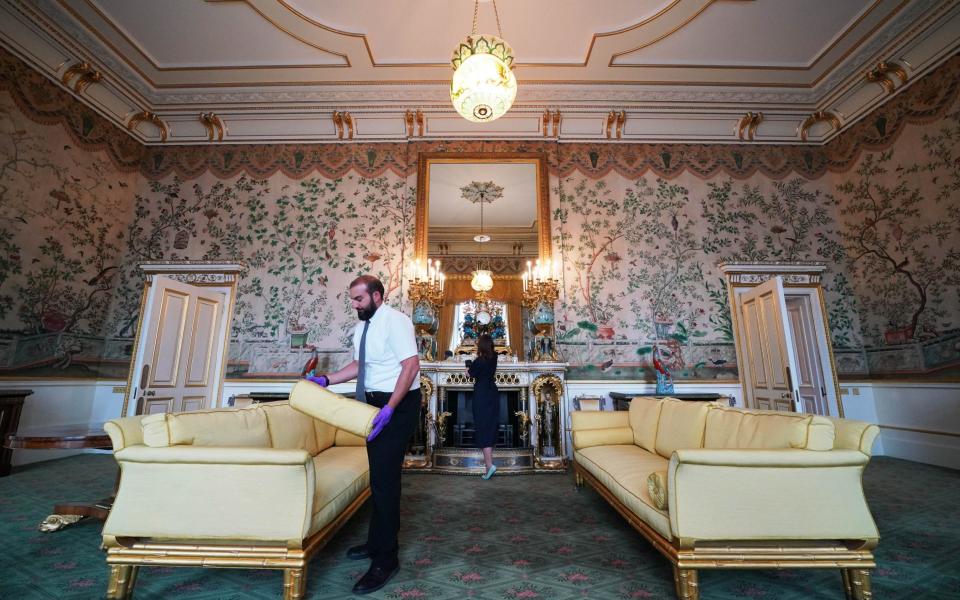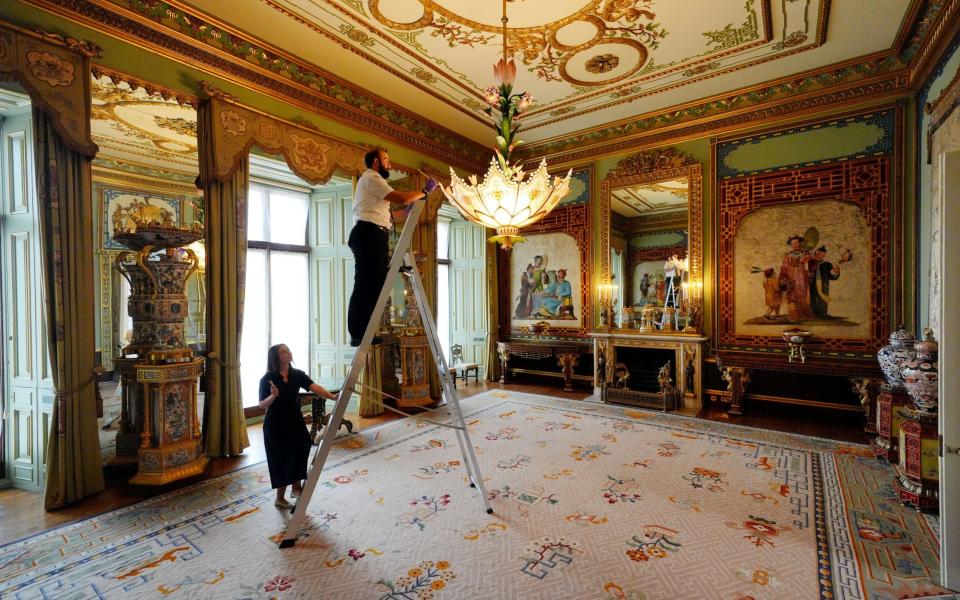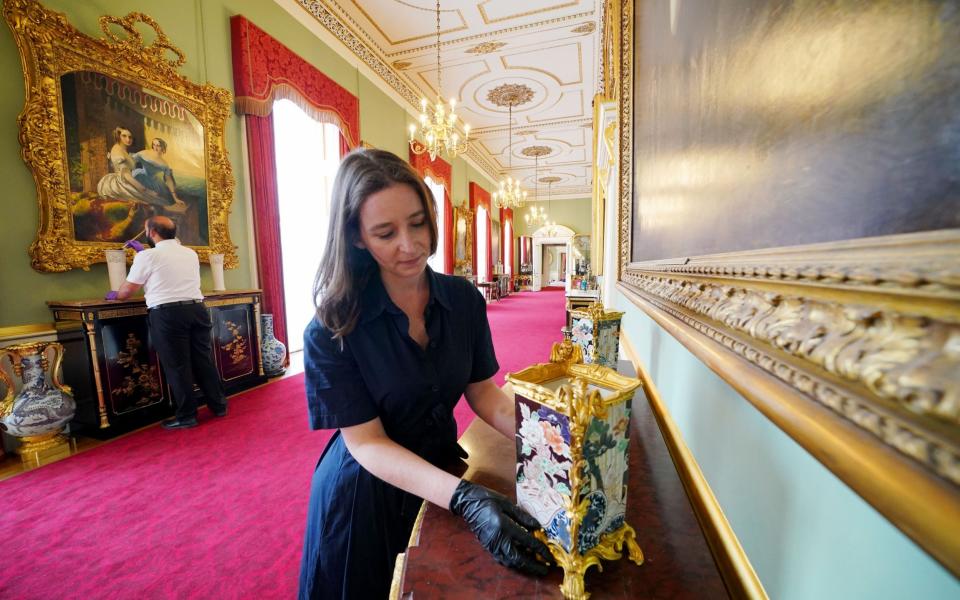Next week the public will follow in the footsteps of the Royal Family when they are invited to see the view from the Buckingham Palace balcony for the first time.
Perhaps at an unexpected moment, these steps will take them past hundreds of golden dragons from floor to ceiling, a Buddha statue blowing incense from its mouth, and arguably the world’s most famous tulle curtains.
In the palace’s Central Room, which was opened at the king’s request, the first group of visitors will be allowed to see where crowds gather for jubilees, royal weddings and birthdays.
The only thing missing from a true royal outing is a television in the corner so the King and his family can gaze down The Mall on important national days.
Although the television is hidden for the tour, visitors will be able to see for themselves why it’s needed: The Queen Victoria Memorial, just in front of the balcony, blocks the view of the crowds beyond.
Instead, tourists will see for the first time what generations of kings and queens have seen, from the original interior decorations of the East Wing to the Changing of the Guard below.
There are no strings, cords or glass to protect the works that have been stored for centuries. Most of them were collected and commissioned by George IV for the Brighton Pavilion before being moved en masse to Buckingham Palace after the new wing was built in 1850.
This summer, around 6,000 visitors will tour the East Wing as part of a trial opening of the palace’s private rooms, which have been preserved and renovated as part of a £369m, 10-year project.
The King was the driving force behind the opening and visitors were given a private tour of what they would see.

Starting from the Yellow Drawing Room, which was previously used as a meeting room for palace staff and where Elizabeth II gave her Christmas speech to the nation in 2004, the 73-metre long “Main Corridor” leads to the Central Room.
Visitors will not be allowed to go out onto the balcony, which is lower than it appears from a distance and has wire cables and lighting at its base.
Those who look carefully as they walk will see dozens of hidden details that have never been seen before, even in the rarely published photographs of the rooms.
At knee height, there are table legs carved to resemble Chinese men.
Beneath Thomas Gainsborough’s large portrait sits a Buddha figure with what appears to be an incense burner blowing smoke from its mouth.
When ticket holders squat down they can see the figure of a man’s statue swinging under one of the tables.
This style, commissioned to imitate the art and design of China and Japan at a time when it was not widely known in the West, is called “Chinoiserie”.


Many of the items were purchased by George IV for the Brighton Pavilion, which he sold in 1850 to finance the East Wing, built in 1847–9 to house Queen Victoria’s growing family.
The rich decor was transported to London on gun carriages in 143 shipments, and the bare walls and corridors of the new wing were transformed into a colourful house where paintings of birds, flowers, butterflies and fish mingled with large traditional royal portraits and chandeliers.
Just as Victoria and Albert’s children counted hundreds of golden dragons on ceilings, fireplaces, vases and curtain rods, the next generation of Prince George, Princess Charlotte and Prince Louis can do the same 175 years later.
Some of the rooms will be familiar to the public from photographs: this week, the West Indies cricket team was hosted in one of the reception rooms, and the late Queen posed for portraits in the Yellow Drawing Room because of its outstanding natural light.
There are large decorative pagodas in the corners, thick curtain rods carved to look like palm trees on top, and floral patterned carpets below.
Where there were once candles, there are now electric versions, and as part of the project, all the floorboards were ripped out and 3,500 works of art were removed for preservation.


Only a few changes have been made over the years, such as Queen Mary putting up wallpaper and bringing silk curtains out of storage, but the “vast majority” has remained unchanged since Prince Albert oversaw the original plans.
The yellow armchairs were moved back into the living room so that members of the royal family could use them comfortably for receptions and meetings.
Among the conservation efforts, the lotus flower-shaped glass chandelier in the Central Room and the 18th-century hand-painted Chinese wallpaper in the Yellow Room were removed and cleaned.
As a result of analysis of historical paint pigments, the walls of the Main Hallway were restored to their original green color scheme.
This year’s tours sold out in hours, but if they are successful it is thought that the East Wing could be made a permanent part of the Buckingham Palace tour, with an annual Summer Open offering access to all 19 state rooms.
This year the tours will end in the palace ballroom, where Jonathan Yeo’s recent portrait of the King is on temporary display.

